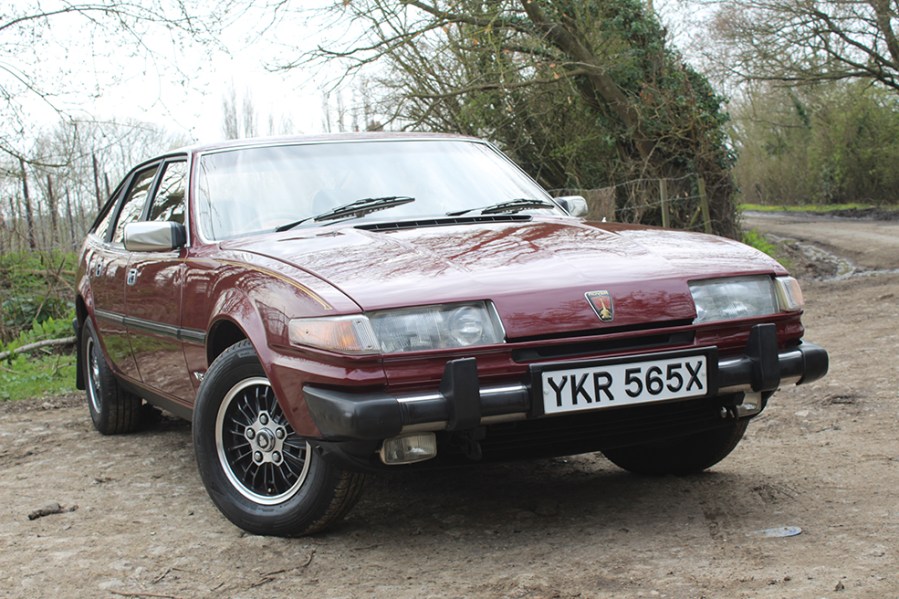The Rover SD1 is an increasingly appreciated classic despite its flaws. We take to the road to see why
Words and images: Jack Grover With thanks to: Percival Motors
This top of the range Rover 3500 Vanden Plas must be one of the very last SD1s to come off the line at Solihull before production moved to Cowley. It is what enthusiasts would call a ‘Series 1.5’, being broadly a Series 1 car as launched in 1977 but with some details that would later appear on the Series 2, such as the black bumper facings and the reshaped wing mirrors with brightwork casings. Of course, the Vanden Plas spec was itself a rather late addition, being introduced in 1980 and bringing with it the dark grey alloy wheels as well as an extensive options list.
Despite the lifting of the model’s image and its values in recent years, it’s still rare to encounter a fully restored Rover SD1. But this one is such a car, having been previously owned by a well-known collector of BL cars and rebuilt by members of the Rover SD1 Club. That was some years ago, and the Rover has since had mechanical work to recommission it after a period of storage, all covered in history file dating back to the mid-1980s.
Most of that previous restoration was, unsurprisingly, focussed on the bodywork. The Bordeaux metallic paint sets of the shape of the SD1 perfectly, and the finish and condition are excellent. There’s some orange peel on the bonnet and doors and perhaps the shine isn’t as deep or as lustrous as it could be – but it’s certainly better than many a factory job. So are the panel gaps, which are tight and even throughout. There is no sign of rust in any of the classic SD1 spots, with the sills, doors, inner wings, valences, rear wings, and sunroof surrounds all clean.

New carpets, retrimmed front seats and some replacement interior trim and dashboard moulds were all fitted as part of the restoration, which is good to know given how fragile SD1 trim could be. The Oatmeal leather seats are still in essentially new condition, and are wonderfully soft and comfortable to sit in. The fact that so much of the interior trim is of non-matching shades just adds to the ‘1970s BL’ charm, but it’s all there and in good condition, from the slightly squared-off steering to the famous ‘podded’ instruments. The Vanden Plas came loaded with toys by the standards of the 1980s – sunroof, electric windows, central locking, air conditioning, cruise control… and it all still works, too.
This SD1 is one of the last of carb-fed V8s before the arrival of the EFi models. All the paintwork in the engine bay matches the condition of the exterior and it all looks like an honest 80,000-mile car. The rocker covers are still smartly painted and have their Rover stickers, the radiator core is in good condition and both the cold-air intake trunks (which often go missing over the years) are still there.
The recommissioning work last year totalled over £8000 and included a new steering rack and power steering pipes, new front brakes, a stainless-steel exhaust and new tyres. The three-speed Borg Warner gearbox was also overhauled a few years ago.
This is an amazingly relaxed way to travel. Your almost float, rather than sit, on the big leather seats. The V8 starts easily after juggling the flimsy-feeling choke lever in the centre console and pulls strongly from tickover with only a refined burble and a bit of fan noise. The automatic gearbox shifts almost imperceptibly from first to second as soon as you’re on the move. The power steering is light and smooth, requiring only limited effort on that distinctive ‘squircular’ wheel. On a straighter, more open bit of road the Rover picked up speed in an entirely unflustered fashion and maintained a supple but well-controlled and silent ride.

Rover 3500 Vanden Plas: our verdict
The SD1 always deserved better than it got – a brilliant design let down by sloppy execution. But it’s increasingly appreciated now, with the mix of classic rear-wheel drive carb-fed V8 character and 1970s futuristic design more appealing than ever.
This one would really be best as a show car given its condition and history, but there’s nothing to say that those shows couldn’t be several hundred miles, and maybe even a few countries, away. It feels like it would manage those sorts of journeys with utter aplomb.


















